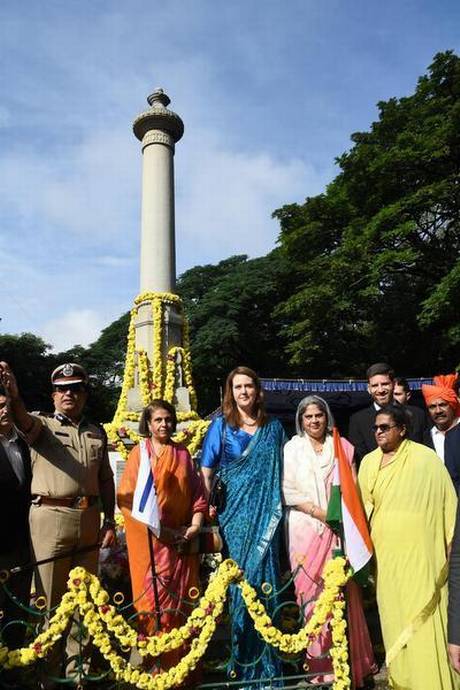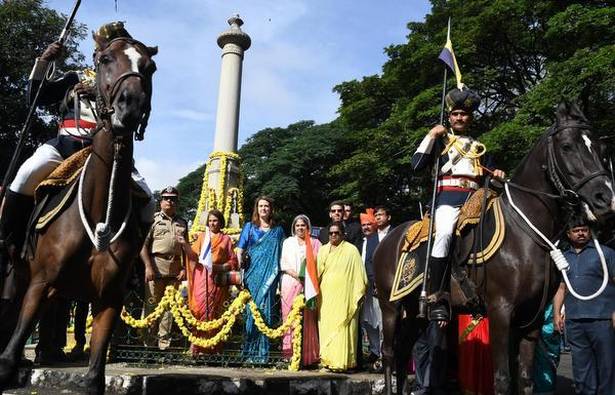
Veera Soudha commemorates the 34th Congress Session of 1924
The 150th birth anniversary of Mahatma Gandhi will be celebrated in Belagavi on Wednesday at the Vijay Nagar Veera Soudha, a monument built to commemorate the 34th Congress Session in Belagavi in 1924.
The monument that encompasses a park, a well and a hall, has been cleaned and decorated. Ministers Lakshman Savadi and Shashikala Jolle will speak during the celebrations scheduled at the monument on Congress Road in Tilakwadi here on Wednesday morning.
The monument that encompasses a park, a well and a hall, has been cleaned and decorated. Ministers Lakshman Savadi and Shashikala Jolle will speak during the celebrations scheduled at the monument on Congress Road in Tilakwadi here on Wednesday morning.
The park stands at the venue of the 1924 Congress Session. The venue was named Vijay Nagar by the organisers of the conference, including Gangadhar Rao Deshpande and N.S. Hardikar. A temporary railway station was built at the venue to help delegates alight. A well was built through Shramdan to provide water for those attending the conference. The well still yields sweet, cool, potable water that is supplied to residents in the surrounding areas.
The park contains fruit and flower trees and has statues of deer and other animals. The main building has a series of photographs of the Session and Gandhiji’s interactions with the leaders of the Independence movement. He is seen with Mohammad Ali Jouhar, president of the 33th Session, and other leaders.
Gandhiji visited Belagavi (erstwhile Belgaum) three times. He attended the Bombay provincial conference of the Home Rule League in 1916, chaired the Congress Session in 1924 and spent 10 days in the Khadi and Village Industries Centre in Hudali village in 1937.
There are several monuments to the Father of the Nation in the district. The City Railway Station has a Charka installed atop its roof and a stone plaque. A pillar is erected in Shivaji Park near Kapileshwar Temple in the city apart from the Veera Soudha building. Gandhiji’s ashes are interred in Mugut Khan Hubballi, while the Khadi centre in Hudali is a living monument that celebrates the proponent of village industries.
source: http://www.thehindu.com / The Hindu / Home> News> States> Karnataka / by Rishikesh Bahadur Desai / Belagavi – October 02nd, 2019


